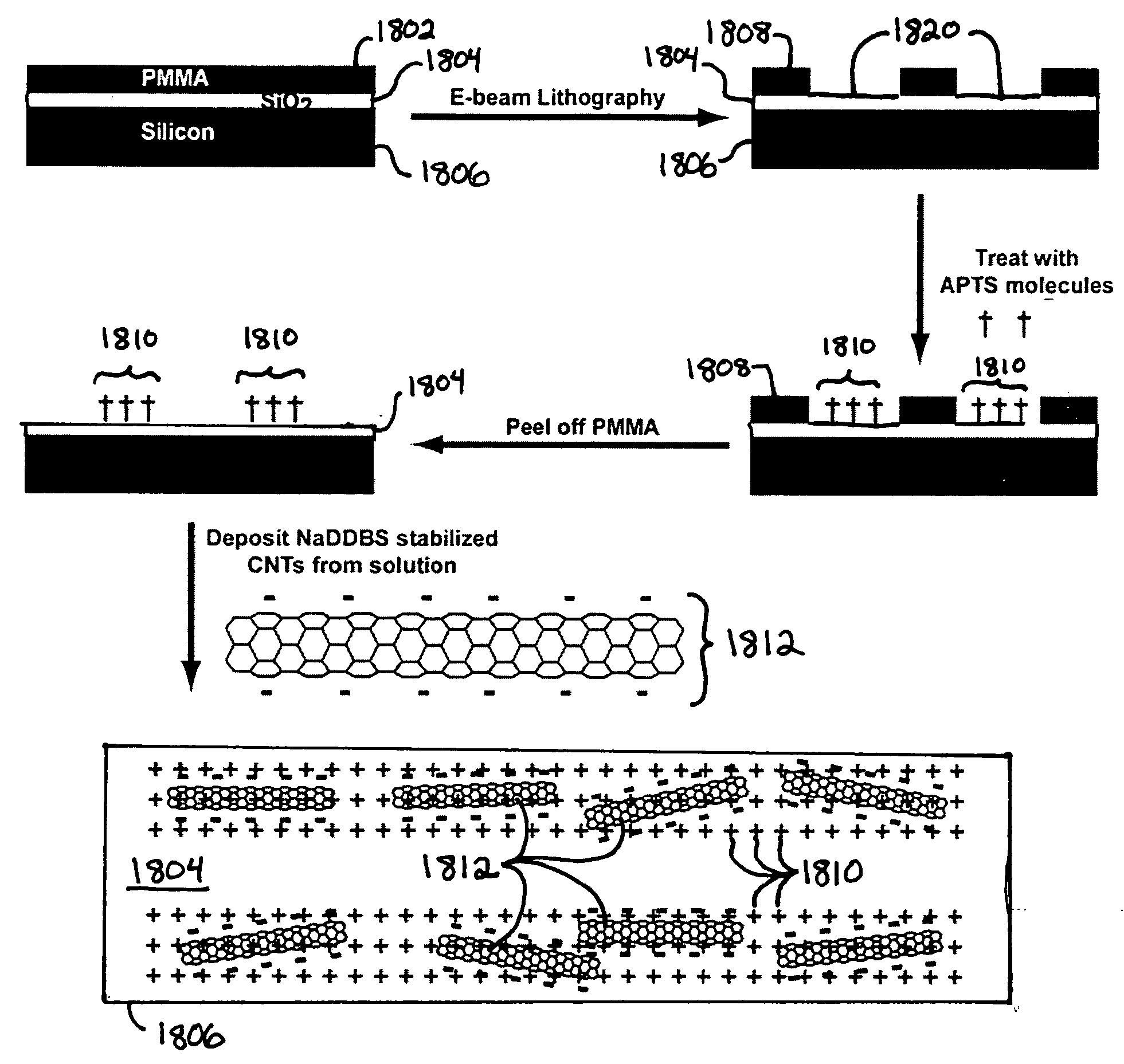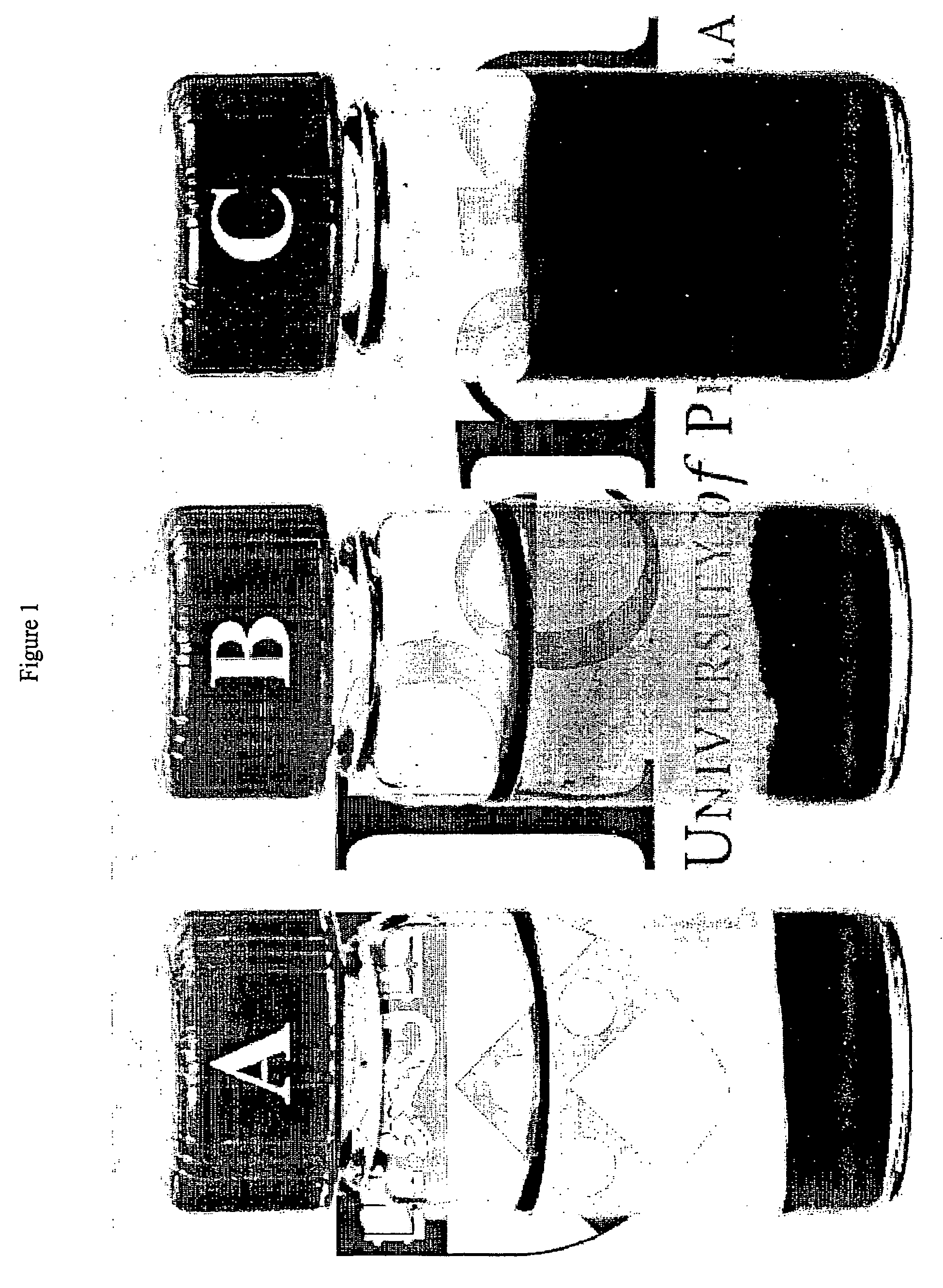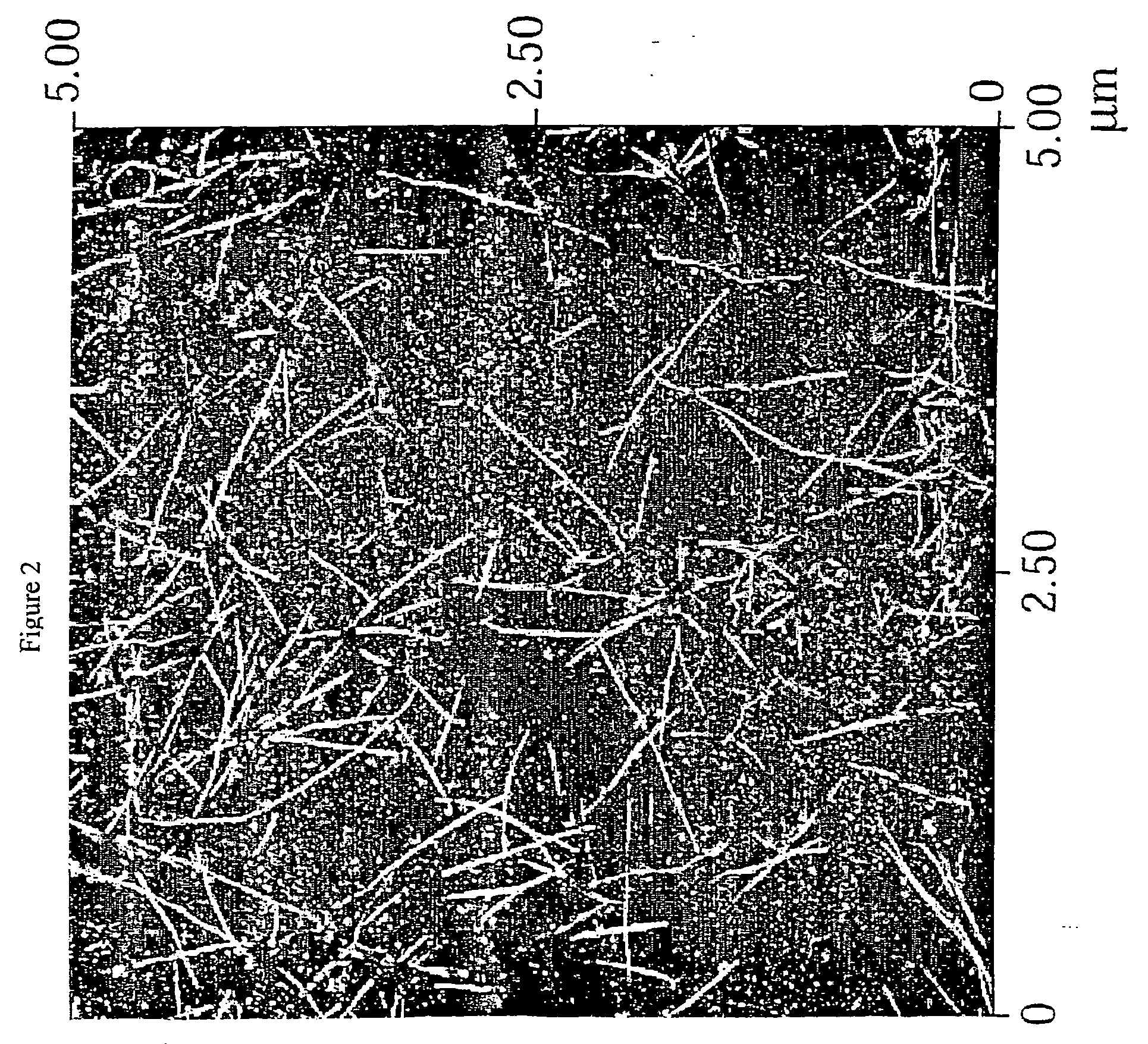Process and applications of carbon nanotube dispersions
a technology of carbon nanotubes and dispersions, applied in nanoinformatics, instruments, transportation and packaging, etc., can solve the problems of chemically modified carbon nanotubes less desirable, difficult to keep individually dispersed in solution, and easy accumulation of nanotubes,
- Summary
- Abstract
- Description
- Claims
- Application Information
AI Technical Summary
Problems solved by technology
Method used
Image
Examples
example
[0234] Purified SWNTs for use in electronic devices. As-grown HiPCO material was purified by heating in wet air in the presence of H2O2, gentle acid treatment, magnetic fractionation (Islam, et al.,. Phys. Rev. Lett. 93,—(2004)) and vacuum annealing. The dominant impurities in as-grown HiPCO were catalyst particles and non-SWNT carbon phases. Thermogravimetric analysis and wide-angle X-ray scattering measurements indicated impurity content was more than 50 wt % in as-grown HiPCO and less than 5 wt % after purification. Based on this measured impurity content and the measured sample mass after purification, the purification process recovered close to 90% of the SWNT content of the HiPCO. Further details of the SWNT purification process are provided below.
[0235] Wet air burn: [0236] 1. Impurity carbon phases (amorphous carbon, fullerenes, etc.) are removed by heating HiPCO material in air in the presence of H2O2 for 3-6 hours.
[0237] Acid treatment: [0238] 2. Oxidized SWNT material i...
PUM
| Property | Measurement | Unit |
|---|---|---|
| width | aaaaa | aaaaa |
| diameters | aaaaa | aaaaa |
| diameters | aaaaa | aaaaa |
Abstract
Description
Claims
Application Information
 Login to View More
Login to View More - R&D
- Intellectual Property
- Life Sciences
- Materials
- Tech Scout
- Unparalleled Data Quality
- Higher Quality Content
- 60% Fewer Hallucinations
Browse by: Latest US Patents, China's latest patents, Technical Efficacy Thesaurus, Application Domain, Technology Topic, Popular Technical Reports.
© 2025 PatSnap. All rights reserved.Legal|Privacy policy|Modern Slavery Act Transparency Statement|Sitemap|About US| Contact US: help@patsnap.com



